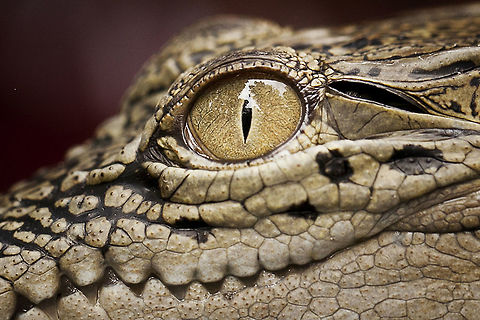
Appearance
The freshwater crocodile is a relatively small crocodilian. Males can grow to 2.3–3 m long, while females reach a maximum size of 2.1 m . Males commonly weigh around 70 kg , with large specimens up to 100 kg or more, against the female weight of 40 kg . In areas such as Lake Argyle and Katherine Gorge there exist a handful of confirmed 4 metres individuals. This species is shy and has a more slender snout than the dangerous saltwater crocodile. The body colour is light brown with darker bands on the body and tail — these tend to be broken up near the neck. Some individuals possess distinct bands or speckling on the snout. Body scales are relatively large, with wide, close-knit armoured plates on the back. Rounded, pebbly scales cover the flanks and outsides of the legs.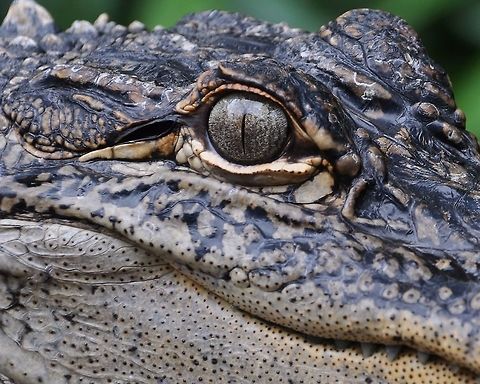
Naming
When Gerard Krefft named the species in 1873, he intended to commemorate the man, named ''Johnston'', who first reported it to him. However, Krefft made an error in writing the name, and for many years the species has been known as ''johnsoni''. Recent studies of Krefft's papers have determined the correct spelling of the name, and much of the literature has been updated to the correct usage. However, both versions are still extant. According to the rules of the International Code of Zoological Nomenclature, the epithet ''johnsoni'' is correct.
Distribution
Freshwater crocodiles are found in the states of Western Australia, Queensland, and the Northern Territory. Main habitats include freshwater wetlands, billabongs, rivers and creeks. This species can live in areas where saltwater crocodiles cannot, and are known to inhabit areas above the escarpment in Kakadu National Park and in very arid and rocky conditions . However, they are still consistently found in low-level billabongs, living alongside the saltwater crocodiles near the tidal reaches of rivers.In May 2013, a freshwater crocodile was seen in a river near the desert town of Birdsville, hundreds of kilometres south of their normal range. A local ranger suggested that years of flooding may have washed the animal south, or it may have been dumped as a juvenile.
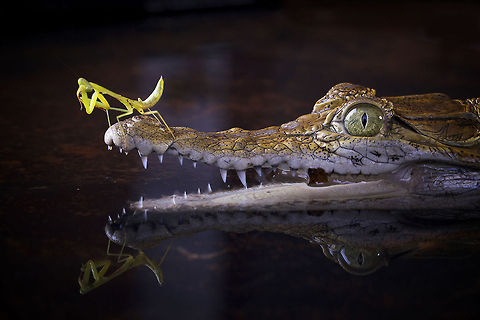
Status
Until recently, the Freshwater crocodile was common in northern Australia, especially where saltwater crocodiles are absent . In recent years, the population has dropped dramatically due to the ingestion of the invasive Cane Toad. The toad is poisonous to freshwater crocodiles, although not to saltwater crocodiles, and the toad is rampant throughout the Australian wilderness. The crocodiles are also infected by ''Griphobilharzia amoena'', a parasitic trematode, in regions such as Darwin.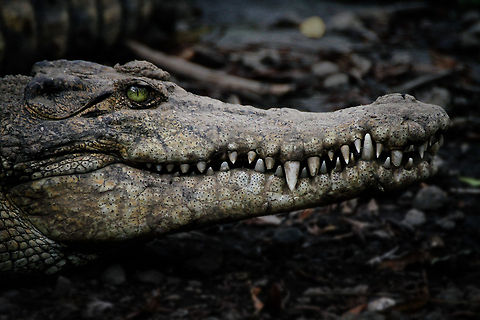
Behavior
They compete poorly with saltwater crocodiles; however, this species is saltwater tolerant. Adult crocodiles eat fish, birds, bats, reptiles and amphibians, although larger individuals may take prey as large as a wallaby.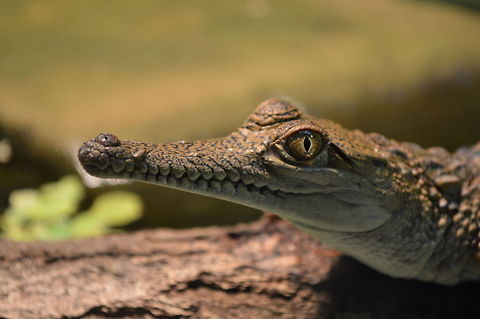
Habitat
Freshwater crocodiles are found in the states of Western Australia, Queensland, and the Northern Territory. Main habitats include freshwater wetlands, billabongs, rivers and creeks. This species can live in areas where saltwater crocodiles cannot, and are known to inhabit areas above the escarpment in Kakadu National Park and in very arid and rocky conditions . However, they are still consistently found in low-level billabongs, living alongside the saltwater crocodiles near the tidal reaches of rivers.In May 2013, a freshwater crocodile was seen in a river near the desert town of Birdsville, hundreds of kilometres south of their normal range. A local ranger suggested that years of flooding may have washed the animal south, or it may have been dumped as a juvenile.
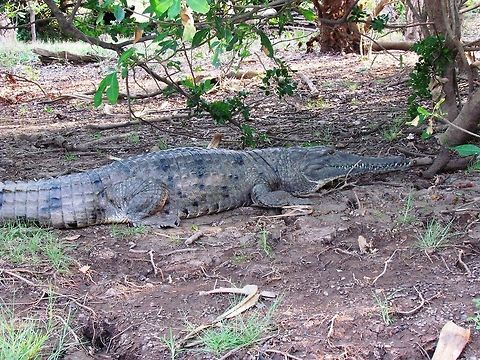
Reproduction
Eggs are laid in holes during the Australian dry season and hatch at the beginning of the wet season . The crocodiles do not defend their nests during incubation. From one to five days prior to hatching, the young begin to call from within the eggs. This induces and synchronizes hatching in siblings and stimulates adults to open the nest. It is not known if the adult that opens a given nest is the female who laid the eggs. As young emerge from the nest, the adult picks them up one by one in the tip of its mouth and transports them to the water. Adults may also assist young in breaking through the egg shell by chewing or manipulating the eggs in their mouths.References:
Some text fragments are auto parsed from Wikipedia.